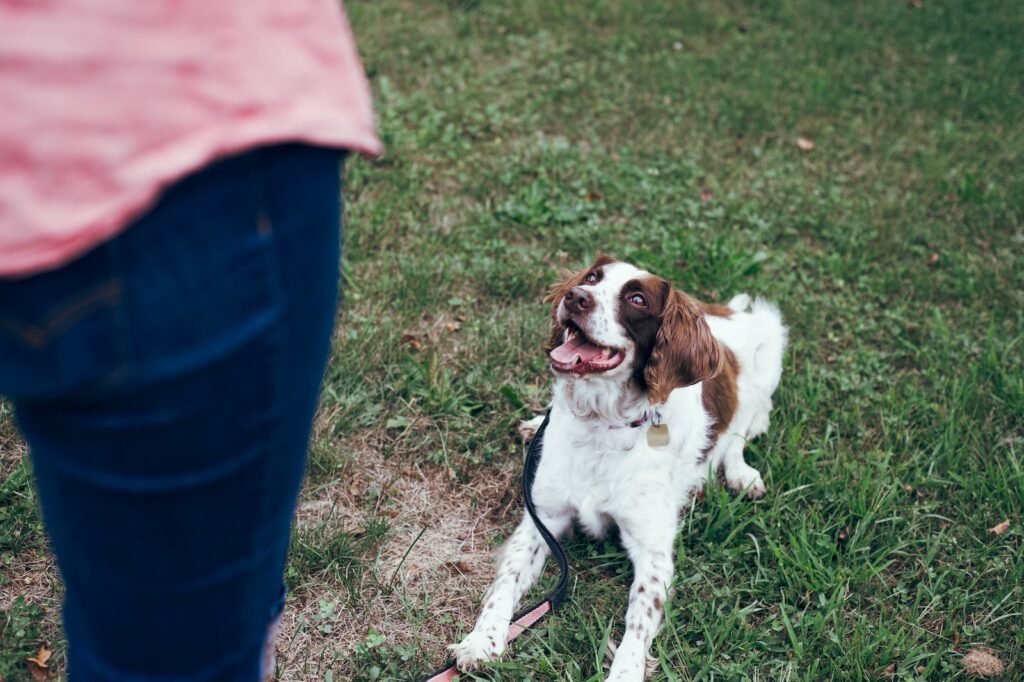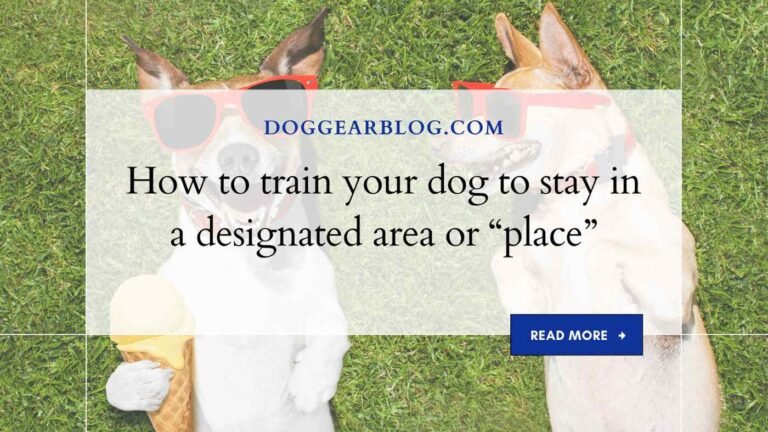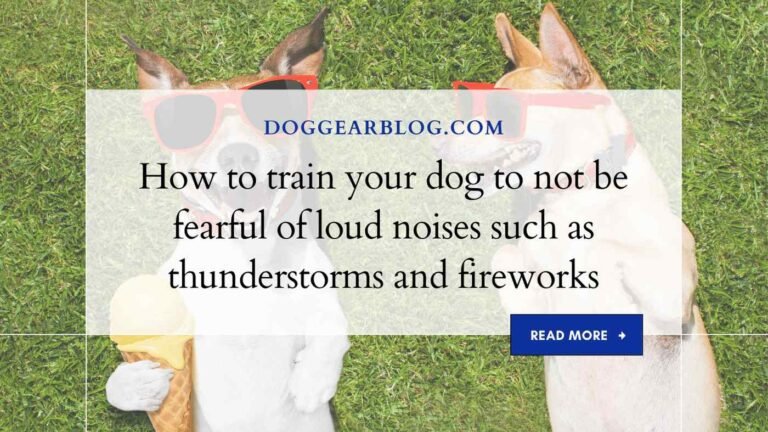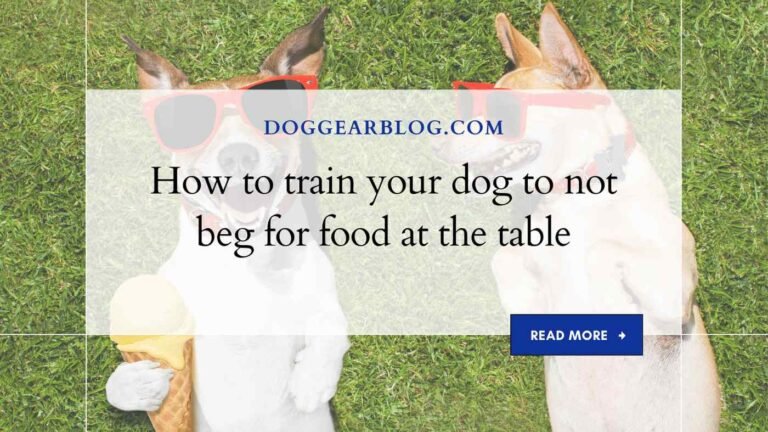How to train your dog to come when called reliably
Have you ever found yourself frantically calling out your dog’s name, only for them to ignore you and continue bounding across the park? It can be frustrating when your furry friend seems to have a mind of their own. But fear not – training your dog to come when called is an essential skill that is easily achievable with patience and dedication.
In this blog post, we’ll provide you with some valuable tips on how to train your dog to come when called reliably, helping you establish a bond of trust and obedience with your four-legged companion. So sit tight and get ready to become the ultimate pup-parent!
The Dangers of Not Calling Your Dog

Not calling your dog when you want them to come can lead to a number of dangerous behaviors. If your dog isn’t properly trained, they may become unruly and wandering, becoming a threat to both humans and other animals. Not only that, but if you don’t regularly call your dog, they may start to think that they’re not needed and lose trust in you. This can cause issues down the line when it comes time for them to be adopted or rehomed. With proper training and communication, however, not calling your dog can be avoided altogether and everyone – including your furry friend – will be happy!
To learn more about the dangers of not calling your dog, read our full article here.
Training Guidelines

Dog obedience training can be a rewarding experience for both you and your pet. The following dog obedience training guidelines will help you ensure that your pup reliably comes when called.
1) Establish the basic commands early on. Start by teaching your dog the basics such as sit, stay, and come when called. Initially, only allow your pet to obey these commands when you are present. Gradually increase the time limit that your pup is allowed to perform the task before responding. This will help to develop trust between you and your pet.
2) Be consistent with your commands and rewards. Reward good behavior with positive reinforcement such as praise, treats, or toys. Be sure to repeat the desired behavior consistently in order to teach it properly. If your pet fails to comply, provide appropriate discipline such as scolding, hitting, or withholding rewards.
3) Teach distractions/leads-of-action (DOAs). Distractions can be anything that will take your pet’s attention away from you; this includes but is not limited to playing with them, ringing a bell, yelling at a distance, or presenting an empty food dish. When using distractions/DOAs, always start from close range so that they have no choice but to look at you. Once your pup is responding well to these cues, gradually extend the distraction/DOA radius until they respond irrespective of where you are located in the house or yard.
4) Build upon positive reinforcement. Once your pup is consistently responding to your commands and distractions/DOAs, begin teaching them new behaviors. One way to do this is by using training sessions called “reinforcers” or “summits”. Reinforcers are things (usually treats or toys) that your pet really enjoys, and which serve as motivators for them to perform desired behaviors. Use positive reinforcement as often as possible during training sessions in order to reinforce good behavior and discourage unwanted behavior.
5) Be patient. Training your dog takes time and patience. Be sure to make it a fun experience for both of you by incorporating positive reinforcement and distractions/DOAs into your training routine. Ultimately, success with dog obedience training will come down to consistency and patience on your part.
For more information about dog obedience training, please visit our website or speak to a professional trainer.
How often to call your dog?
There is no one definitive answer to this question as each dog is different and responds differently to different frequencies of calls. However, there are some general guidelines that can be followed when training your dog to come when called.
Whenever possible, it is best practice to call your dog multiple times in a row before continuously waiting for an answer. After a few repetitions of this behavior, you will likely notice that your dog begins responding more reliably when called. Generally speaking, it is beneficial to call your dog every couple of minutes during the early stages of training in order to reinforce good behavior. As your dog becomes more reliable and conditioned, you may want to intermittent call them less frequently (every 5-10 minutes), depending on their temperament and obedience level. It’s important not to over-call or harassing your pet at any time – always keep Training with positive reinforcement in mind!
There is no right or wrong answer when it comes to how often to call your dog, as each situation will be different. However, following a few general guidelines should help you get started while training your pup!
Rewards for obedience
No matter how much training you do, your dog will always have some moments of disobedience. What you need to remember is that disobedience is only a symptom of a bigger problem – insufficient obedience. The good news is that there are many rewards for obedience that can help curb your dog’s disobedience, and eventually make him a reliable learner.—One way to teach obedience is to start with small tasks, such as waiting at the door while you’re inside, then gradually adding more complex commands.
Another approach is to use food treats as rewards for following simple commands like “sit” or “lie down.” If your dog consistently follows these commands, offer her something more tasty, like a favorite toy. Just be sure not to over-indulge her – treats should only be given in response to proper behavior. Consider boarding or daycare for dogs who exhibit severe disobedience problems. These facilities can provide plenty of opportunity to reinforce good behavior while keeping your dog supervised and engaged.—If all else fails, enlist the help of a professional trainer. They have years of experience teaching dogs proper obedience and can develop a customized plan specific to your pet’s needs.
Many people believe that there are no real rewards for obedience when it comes to their pet dog, as opposed to a treat or toy given as reinforcement for good behavior. However, there are actually many effective rewards for dog obedience, depending on the situation and dog’s personality.
The most common rewards for obedience are treats, however there are also special toys or chews designed just for this purpose, as well as walking, playing fetch or other activities that will keep your dog occupied and mentally stimulated. As with all training, be consistent in your approach and rewards to ensure the most positive outcome.
The key to consistent training
There are a few key things you can do to help ensure that your dog reliably responds when called, no matter where you are. One of the most important things is to be consistent with your training. If you always call your dog when you want them to come, they will eventually learn to respond without needing to be reminded.
Another key thing to remember is that not all people’s voices are the same. A person’s voice can sound louder or softer depending on how tired or stressed they are. Make sure you adjust the volume of your voice accordingly so that it is clear and consistent for both you and your dog.
Be patient with training. Dogs are usually very motivated by positive reinforcement, but it can take some time for them to understand and respond to commands. Be Patient and Be Consistent – these tips will help make training your dog easy and enjoyable!
Conclusion
Training your dog to come when called reliably is an essential part of having a well-behaved pet. By following these tips, you can help teach your dog the command and increase your chances of success in no time at all. Remember that consistency is key – make sure you call for your pup every time you want them to come, whether it’s during a walk or when you’re home alone. With some practice, you’ll be able to train your pet perfectly in no time!






